| Rachael R. Wolney is a third year Ph.D. candidate in the Department of English at Washington State University. Her research interests include Disability Studies, Young Adult Literature, and Education. She teaches using disability studies pedagogy in a range of literature and writing courses, but specifically enjoys working with preservice teachers and practicing teachers in learning about disability. Ashley S. Boyd is an associate professor of English education at Washington State University where she teaches courses on English Methods and Young Adult Literature and researches practicing teachers’ social justice pedagogies as well as avenues for cultivating students’ critical literacies. She is author of Social Justice Literacies in the English Classroom and co-author (with Janine J. Darragh) of Reading for Justice: Engaging Middle Level Readers in Social Action through Young Adult Literature. |
As teacher educators, however, we regularly encounter able-bodied preservice teachers who feel underprepared to work with students with disabilities and have many, many questions. They worry about saying or doing “the wrong thing,” about knowing how to best serve students’ needs, and about the laws, policies, and standardized measures that might impact their capacities to meet students where they are. Although they will have coursework in their teacher preparation programs to assuage their concerns and help develop their knowledge, we find that a personal, humanizing encounter strengthens their understandings. And thus, we draw on YAL as a way to cultivate deeper interaction with youth with disabilities and different abilities and as a way to encourage our pre-service teachers to use such texts in their future classrooms.
According to the National Center for Education Statistics (NCES) (2022), there were 7.2 million students, aged between 3 to 21 years, receiving special education services under the Disabilities Education Act (IDEA) in the academic year 2020-21 (para. 1). The highest disability type reported among disabled students was a learning disability, at approximately 33 percent (Table 1). NCES (2022) also reports an increase in the percentage of hours students with disabilities spend within the general classroom, documenting that in 2020, 66 percent of disabled students spent 80 percent or more of their day in general education spaces alongside their able-bodied peers. Trends suggest that the number of students with disabilities will continue to increase each year and alongside this so will the number of disabled students participating in general education spaces (Table 3, para. 5). It is imperative that diverse representations of different abilities exist within the classroom to give students with disabilities agency and spaces for self-reflection. However, we insist that diverse representations of abilities are not meant for only students with impairments but can create spaces of learning about differences for all readers (Bishop, 1990).
As disability is increasingly present within classroom environments, we still find representations of different abilities, discussion, and critical engagement with these topics is often disregarded or deemed unnecessary (Erevelles, 2000, p. 32). In response, and as part of our larger focus on social justice and engagement with topics of race, class, gender, and sexuality, we offer a unit within our YAL courses that specifically includes representations of disability. Pre-service candidates often begin discussions of ability differences with apprehension and timidity and are encouraged by our inclusion of disability-focused readings and respond quickly with interest, sharing personal stories and engaging critically in discussions and activities. Throughout our unit, we offer candidates a space to engage in textual analysis of disability representation using disability studies as a framework for study, and we invite them to apply these lenses to their worlds, current and future.
This post offers a snippet of the foundational work we utilize for teaching about ability differences with pre-service candidates in our YAL courses. We offer a brief overview of disability studies and discuss traditional stereotypical representations of disability. Current depictions in YAL offer new perspectives on disability identity and ability difference, which is to be lauded. However, we also note that not all representations of disability are equal and discuss the dangers of “inclusive” representations that can potentially promote continued discrimination against people with impairments. We provide teachers with ways to choose YAL texts that illustrate ability differences that disrupt stereotypical representations and offer possible ways to engage students with these selections to create moments for social justice or action. We focus specifically on YAL for pre-teen and young teenagers, those typically considered middle school aged, as we promote the inclusion of disability and ability differences at early stages of learning in the hopes that disability and identity difference will become normalized through educational practices of inclusion (Landrum, 2001, p. 252). We offer three texts: Charlie & Frog: A Mystery by Karen Kane (2018), How to Become a Planet by Nicole Melleby (2021), and Forever This Summer by Leslie C. Youngblood (2021). Each of these texts depict characters with ability differences which include representations of physical and mental impairment.
Disability Studies
Disability studies is a field of study that situates disability as a social construct. The social model of disability teaches that disability does not occur because of impairment but because of an unaccepting society which excludes disability from participation. In contrast to the medical model of disability, which promotes curing, fixing, or restoring the body to a normalized state, the social model accepts impairments and differences of the body and questions how society responds to these differences (Shakespeare, 2017, p. 13). Disability studies questions what it means to be human, how to ethically respond to difference, and interrogates the answers to these questions in any given moment of history and time (Kudlick, 2003, p. 764). This approach maintains that disability identity does not exist on its own, but is complicated by political, social, institutional, and cultural definitions of the body. According to Subini Ancy Annamma, David Connor, and Beth Ferri (2013), disability is created from “interpretations of and responses to specific differences from the normed body,” and that constructions of disability historically shift based on context (p. 3). A great example of this is the IQ test. There have been multiple changes to the score on the IQ test that supposedly determines intelligence (Annamma, Connor, & Ferri, 2013, p. 3). Currently, many scholars view the IQ test as unable to accurately determine intellectual capability, and as we continue to understand that testing can be affected by multiple factors of oppression, it continues to be questioned for its credibility.
Differences from the norm can include measures beyond the presence or lack of impairment. Categories and assumptions about age, strength, endurance, health, weight, independence, and both physical and mental capabilities can all be used to label the body as impaired, incapable, or disabled (Kudlick, 2003, p. 769). Disability studies questions, “What is normal?” and “How is normal constructed to privilege some while oppressing others?” Dolmage (2017) writes, disability is always present because there are no normal or ideal bodies, and as “the world is built to accommodate the normal body and mind, we all experience some degree of discomfort due to these limits” (p. 62; p. 123). Disability studies and disability representation is not solely for the impaired body. Instead, this framework requires the unaccepting majority to critically examine and change any overarching assumptions about ability and act against ableism, the favor of able-bodied individuals.
Disability Representation and Choosing Texts
Disability representation in texts, film, and media impacts social views of disability and ability differences. Representations are constructions that reflect current dominant views; however, reading texts that include new and informed views of ability differences gives readers a space for questioning the dominant structures that govern the body experienced both narratively and in reality (Quayson, 2007, p. 15). Historically, disability representation was constructed in a stereotypical and damaging way, often following a prescriptive and boring portrayal of something to be pitied or cautious of. Ability differences were often only included to highlight main character growth or used for didactic messages, and rarely did disabled characters survive with impairment throughout the entirety of a story (Mitchel & Snyder, 2017, p. 209). Also, disability is often equated with inability (Kudlick, 2003, pg. 769). Within this framework, stories of disability are often narrow and formulaic, making it even more difficult for readers to create meaning from their inclusion.
Additionally, to support selection of YAL depicting disability, the American Library Association (ALA) (2023) chooses a text for primary, secondary middle age, and secondary teen age to win the Schneider Family Book Award each year, which honors authors or illustrators who capture the disability experience for adolescent readers (para. 1). YAL selected based on age group and grade level appropriateness, these texts praised by the ALA serve as highly recommended texts to add to the curriculum or provide in classroom libraries.
We offer pre-service candidates these materials to help them evaluate representations of disability during text selection and we ask them to remain critical of these representations. Impairment is often a personal experience and even though two people may share the same diagnosis, their own lived experiences will often be different (Garland-Thomson, 2017, pg. 15). Because of this, we advocate that there is not a single narrative of disability or ability difference. We ask students to consider authenticity in representation with questions such as: Is the author closely related to disability or disabled themselves? If not, have they conducted enough research to portray disabled experiences accurately and discuss a community that they may not belong to? Finally, we ask students to consider the differences between ‘inclusive’ representations of disability or ability differences that are superficial and texts which include disability representation as central to understanding different identities and experiences of difference, inquiring: What is the difference between inclusion and representation? We task them with applying these questions to specific texts and have rich conversations as they engage in the personal narratives offered by the authors.
Three Texts with Different Abilities
The questions and resources above guide our students in a deeper examination of representation and offer multiple stories of ability difference. In what follows, we describe three novels that we draw on for middle grades education, hoping that engaging our teacher candidates with these will encourage them to use them in similar ways with their future students. As we know middle school is a time when students are developing their own identities, building their worldviews, and learning about those different from them, we feel this is a crucial time to introduce such works and ideas.
Selection of YAL that depicts ability differences in new and informed ways such as the three texts outlined above can help students develop critical literacy skills, offering spaces to “interrogate the roles of power, agency, and identity” in complex systems of power (Curwood, 2013, p. 18). Each of these three texts can encourage informed conversations about difference, offer spaces for students with impairments agency, and can create possible moments of action that potentially help break down barriers for marginalized communities, such as the disabled community.
Reading and Acting with Students
When we read texts such as those above with students, we ask them to apply the criteria from Dunn (2015) and the ADL (2013) to evaluate the representation of different abilities in them. Our students note the affirming stance taken toward characters without falling into the “hero” discourse (lauding people with disabilities as being heroes) or “overcoming narratives.” We ask them to highlight specific scenes or dialogue in which the author achieves positive representation according to the criteria provided and we also task them with cataloging specific word choices and language used to refer to disability and ability (Wolney & Boyd, 2021). They evaluate the main characters and supporting roles (who is in which role) and elements such as the character’s independence, diversity, and relationships with others. And of course, we invite any critiques or questions they have as well, opening space to show that sometimes narratives can do both. Finally, we return to the author’s position and look for information about them to determine their connection to the topic.
We want students to do more than read and evaluate, however. We see the issues of ableism and respecting different abilities as related to social justice and in need of public attention. Each semester in our YAL course, we assign Social Action Projects wherein students use a novel we read in class as a springboard to identify an area of injustice and to take action on our college campus to address the problem. Using the model COAR (Boyd, 2017), students undergo a process of narrowing from topic (e.g. mental health) to problem (e.g. lack of awareness of mental health services on campus) and then follow a series of steps: contextualize, organize, act, and reflect. Based on our work around disabilities studies and texts such as the three detailed above, students might decide to create an awareness campaign around stereotypes and misconceptions of disabilities in general or of a specific type, using what they learned while reading to prompt additional research. Many groups have used social media to advertise their campaigns or have even built websites. Inspired by Frog and Agnes in Charlie & Frog: A Mystery they might debunk fallacies around Deafness. Other students have also hosted film screening nights of movies with problematic representations and led a critical dialogue after the viewing. With regard to characters like Fallon and Pluto in How to Become a Planet, students might promote strategies for boosting confidence and positive identity development, such as daily affirmations and ways to spread kindness. Students are often very creative when allowed the space to design and develop their own projects and the inspiration they draw from the texts helps them determine avenues to follow. And, these projects can be implemented across grade levels, from middle school (Boyd & Miller, 2020; Boyd & Darragh, 2023) to universities (Boyd & Darragh, 2019).
Closing Thoughts
As educators passionate about social justice and young adult literature, we feel that drawing on novels that showcase different abilities is a crucial way to engage students in learning about humanity and in taking action for a more just world. For our pre-service teachers in particular, reading these novels has multiple benefits: It helps them envision the varied needs of youth with whom they will work, and reading such texts through the lens of representation adds an additional layer to facilitate their evaluation of potential classroom tools. By examining types of representation, they can draw on novels as a means of promoting positive messages about disability and different abilities.
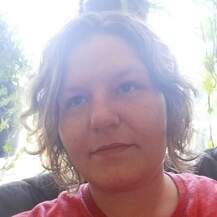
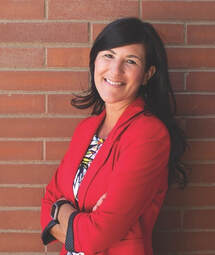
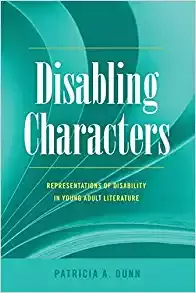
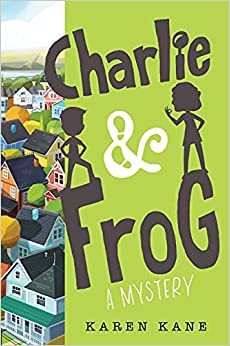
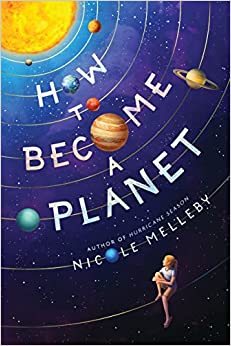
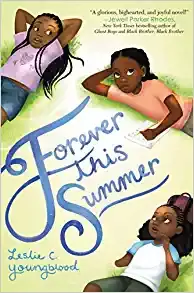

 RSS Feed
RSS Feed